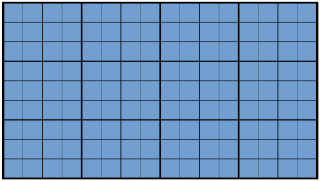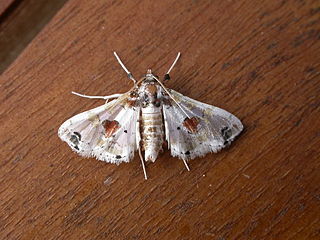
Pan and scan is a method of adjusting widescreen film images so that they can be shown in fullscreen proportions of a standard-definition 4:3 aspect ratio television screen, often cropping off the sides of the original widescreen image to focus on the composition's most important aspects.

Widescreen images are displayed within a set of aspect ratios used in film, television and computer screens. In film, a widescreen film is any film image with a width-to-height aspect ratio greater than the standard 1.37:1 Academy aspect ratio provided by 35 mm film.

16:9 is a widescreen aspect ratio with a width of 16 units and height of 9 units.

The PXL2000 is a toy camcorder produced by Fisher-Price in 1987. Designed for maximal economy, it records extremely low-resolution monochrome video and audio, all to compact audio cassette.

14:9 (1.555...) is a compromise aspect ratio between 4:3 and 16:9. It is used to create an acceptable picture on both 4:3 and 16:9 TV, conceived following audience tests conducted by the BBC. It has been used by most UK, Irish, French, Spanish, Colombian and Australian terrestrial analogue networks, and in the US on Discovery Networks' HD simulcast channels with programming and advertising originally compiled in 4:3. Note that 14:9 is not a shooting format; 14:9 material is almost always derived from either a 16:9 or 4:3 shot, and no televisions have ever been made in 14:9.

The Heckler & KochP7 is a German 9×19mm semi-automatic pistol designed by Helmut Weldle and produced from 1979 to 2008 by Heckler & Koch GmbH (H&K). It was revealed to the public for the first time in 1976 as the PSP. The P7M13, a variant of the P7 with a double-stack magazine, was produced until 2000, and was unsuccessfully submitted to the U.S. Army XM9 pistol trials as a replacement for the M1911 pistol.

Open matte is a filming technique that involves matting out the top and bottom of the film frame in the movie projector for the widescreen theatrical release and then scanning the film without a matte for a full screen home video release.
In library science, special collections are libraries or library units that house materials requiring specialized security and user services. Special collections can be found in many different organisations including research libraries, universities, colleges, schools, national libraries, public libraries, museums, art galleries, archives, historic houses, cathedrals, subscription libraries, learned societies, hospitals, companies and monasteries.

A gat is a Korean traditional hat worn by men along with hanbok during the Joseon period. It is made from horsehair with a bamboo frame and is partly transparent.

Ngorongoro District is one of seven districts in western Arusha Region of Tanzania. The district is bordered to the north by Kenya, to the east by Monduli District, the northeast by Longido District, and to the south by the Karatu District. The western border is the Serengeti District in Mara Region. Ngorongoro District is home to the Ngorongoro Crater and was named after it. It covers an area of 14,036 km2 (5,419 sq mi). The district is comparable in size to the land area of Timor Leste. The administrative seat is the town of Loliondo. The district is home to the Ngorongoro Conservation Area which is a UNESCO World Heritage Site. The district is also home to the third tallest mountain in the country, Mount Loolmalasin. According to the 2002 Tanzania National Census, the population of the Ngorongoro Region was 129,776. By 2012, the population of the district was 174,278.
In television technology, Active Format Description (AFD) is a standard set of codes that can be sent in the MPEG video stream or in the baseband SDI video signal that carries information about their aspect ratio and other active picture characteristics. It has been used by television broadcasters to enable both 4:3 and 16:9 television sets to optimally present pictures transmitted in either format. It has also been used by broadcasters to dynamically control how down-conversion equipment formats widescreen 16:9 pictures for 4:3 displays.

Pichenotte refers to a family of several disk-flicking games, mostly French Canadian in origin, including crokinole, carrom, and pitchnut, which may sometimes be played with small cue sticks. Pichenotte is a Canadian French word meaning 'flick', which is derived from the European French word pichenette, also meaning 'flick'. These folk games are in the public domain, and are not subject to copyright like a commercial board game. Nor are they patented games. However, the names Pichenotte and Pitchnut are registered trademarks in the United States. "Crokinole is a popular Canadian board game also commonly called pichenotte." "The carrom game throughout Quebec is known as 'pichenotte'" The game community site Knipsbrat.com states that, like the German name Knipsbrat ('flicking-board'), "pichenotte is another name for crokinole" The Canadian game board collection at the Quebec Museum of Civilization in Quebec City includes both the square carrom-type board and the round crokinole-type game Crokinole is also called 'pichenotte' throughout much of North America; modern-day tournaments have been held as far apart as Tavistock, Ontario, and Santa Fe and Albuquerque, New Mexico.
The International Association of Insurance Supervisors (IAIS) is a voluntary membership organization of insurance supervisors from over 190 jurisdictions, constituting 97% of the world's insurance premiums. It is the international standards-setting body for the insurance sector. The IAIS was established in 1994 and operates as a verein, a type of non-profit organisation under Swiss Civil Law.

Leucinodes orbonalis, the eggplant fruit and shoot borer or brinjal fruit and shoot borer, is a moth species in the genus Leucinodes described by Achille Guenée in 1854. Its native distribution is in the tropical and subtropical parts of Australia and Asia, where it is recorded from Pakistan, Nepal, India, including the Andaman Islands, Sri Lanka, Bangladesh, Myanmar, Laos, Cambodia, Vietnam, Thailand, China, Taiwan, Japan, Malaysia, Singapore, Brunei, the Philippines, and Indonesia (Java). It has also been intercepted from fruit imports in the U.S.A., the Netherlands, Denmark and Great Britain, where it was also reported from the wild. A taxonomic revision of the Leucinodes species of Sub-Saharan Africa concluded that L. orbonalis is currently not present in Africa, and that previous records of this species were misidentifications of previously undescribed species.
The aspect ratio of an image is the ratio of its width to its height, and is expressed with two numbers separated by a colon, such as 16:9, sixteen-to-nine. For the x:y aspect ratio, the image is x units wide and y units high. Common aspect ratios are 1.85:1 and 2.39:1 in cinematography, 4:3 and 16:9 in television photography, and 3:2 in still photography.

Dolby Vision is a set of technologies developed by Dolby Laboratories for high dynamic range (HDR) video. It covers content creation, distribution, and playback. It includes dynamic metadata that are used to adjust and optimize each frame of the HDR video to the consumer display's capabilities in a way based on the content creator's intents.

The West Midlands Green Belt is a statutory green belt environmental and planning policy that regulates the rural space within the West Midlands region of England. It is contained within the counties of the West Midlands, Shropshire, Staffordshire, Warwickshire and Worcestershire. Essentially, the function of the green belt is to more rigorously manage development around the cities, towns and villages in the large West Midlands conurbations centred around Birmingham and Coventry, discouraging convergence. It is managed by local planning authorities on guidance from central government.

Beeley Moor is a small gritstone upland area in the Derbyshire Peak District of central and northern England, near the villages of Beeley and Baslow. Its highest point is 371 metres (1,217 ft) above sea level.

The Kel-Tec P50 is a FN 5.7×28mm semi-automatic pistol designed in the United States by Kel-Tec in 2021.














